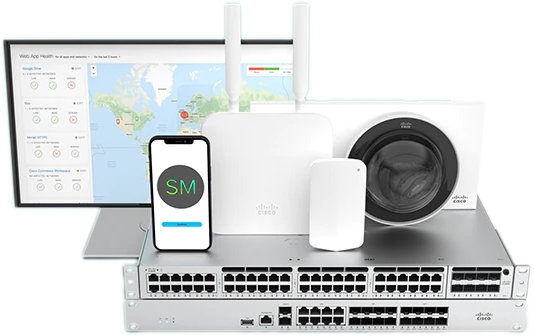 The rapidly spreading Coronavirus left employers globally straddling between physical working, which was previously the norm, and remote working models. Without a doubt, remote work has switched from a unique working incentive to a current norm. Unfortunately, embracing the work from home lifestyle isn’t easy for managers and employees. Supervisors are battling various challenges associated with operational inefficiencies, especially collaboration between teams. If you are in the same fold, take advantage of the following tips to boost collaboration among your teams.
The rapidly spreading Coronavirus left employers globally straddling between physical working, which was previously the norm, and remote working models. Without a doubt, remote work has switched from a unique working incentive to a current norm. Unfortunately, embracing the work from home lifestyle isn’t easy for managers and employees. Supervisors are battling various challenges associated with operational inefficiencies, especially collaboration between teams. If you are in the same fold, take advantage of the following tips to boost collaboration among your teams.
-
Equip Teams with the Right Tools
Despite the crucial importance of communication to remote work, it remains one of the biggest challenges. Teams and employees need the right tools, whether working from home or in a physical office. Providing sufficient tools is key to ensuring collaboration between teams and departments. Some of the popular tools to equip your team with include;
- Wrike – best software for online project management. It comes with several remote collaboration features.
- WebEx– a popular video and chat conferencing tool that brings a personal touch through online meetings. It is a digital version of face-to-face communication.
- G Suite – several business tools that enable employees to create and share project documents.
- CloudApp – just like Zoom, it provides for smooth communication between employees. It allows for screenshots, recording, and sharing of GIFs.
- TINYpulse – allows supervisors to run surveys, evaluate engagement levels, and gather feedback from remote employees.
- Slack – it provides a platform that employees can share ideas and casual conversations.
The tools mentioned above are just but a few that can boost collaboration in your team. However, you can add more collaborative solutions to empower your remote teams.
-
Define Team Schedules
Besides communication, availability is another common challenge that comes with remote work. Even as employees get the benefits of a flexible work schedule, flexibility might not be feasible for your remote team. Therefore, to ensure maximum efficiency and smooth collaboration, you should set clearly defined schedules.
However, this doesn’t mean that you insist on a fixed number of continuous working hours for your employees. As a manager, adopt different working schedules to suit your team members and stick to agreed schedules. That said, consider the following when setting favorable team schedules;
- The different time zones that your remote employees are in
- If there is an overlap of time zones and working hours
- If employees are comfortable to be contacted or assigned tasks during odd hours
- Appropriate and reasonable response times
Having gathered all this information, you can create a daily, weekly, or monthly schedule that suits your employees. You should also set a one-on-one discussion weekly when all team members are available.
-
Be Clear When Communicating
A study by Owls Labs suggests that brainstorming sessions, which are crucial for successful project completion, is challenging for most remote teams. Confusing and vague statements often hinder creative collaboration. While emails, comments, texts, and other native messaging tools provide seamless communication channels, there is an absence of body language, which leaves all the messages to personal interpretation.
 With such misunderstandings, a remote team can experience daily hiccups and other mistakes that can derail various projects. As such, team managers and employees should make crystal-clear points when relaying messages. For instance, when drafting emails or messages, you should leave no room that can lead to misunderstandings. You shouldn’t assume that the recipient will automatically understand what you mean in your message.
With such misunderstandings, a remote team can experience daily hiccups and other mistakes that can derail various projects. As such, team managers and employees should make crystal-clear points when relaying messages. For instance, when drafting emails or messages, you should leave no room that can lead to misunderstandings. You shouldn’t assume that the recipient will automatically understand what you mean in your message.
A good way of ensuring clarity when communicating is creating specific acronyms that only your team members can instantly understand. It is also important that you outline the urgency of your message.
-
Use Multiple Communication Channels
Using plain text to communicate with teams and employees often eliminates the important personal touch required during communication. With time, this can significantly weigh down collaboration. Therefore, you should consider making some changes in your communication strategies from time to time.
For instance, instead of a normal group chat with hundreds of messages, which crucial messages can be lost in the clutter, consider using a video conference. Additionally, if you have a project that needs to be completed urgently, email may not be inappropriate. Instead, it is wise to communicate with your team using an instant messaging tool.
-
Encourage Team Building Activities
The absence of physical contact doesn’t mean that you shouldn’t engage in active team building activities. Team building activities can help strengthen the relationship among your employees. As mentioned, proximity is not necessary. Alternative digital team building activities that boost remote collaboration include on-call coffee sessions, multiplayer games, virtual home tours, and more.
Improve Remote Collaboration with these Tips
Remote work has been on the surge and will likely grow dramatically in the next few years, especially as more companies continue recognizing the importance of remote work. However, working remotely comes with a plethora of challenges, effective collaboration being a significant problem. If your team is facing this, take advantage of the tips mentioned above.
Conclusion
From keeping communication alive, coordinating calls to different time zones to assigning tasks, managing a remote team can be challenging. Remote or hybrid managers should leverage various best practices for effective collaboration with their team members. Working remotely brings forth significant cultural and technological changes. However, it gives businesses a competitive advantage, especially if you have a strong team.










